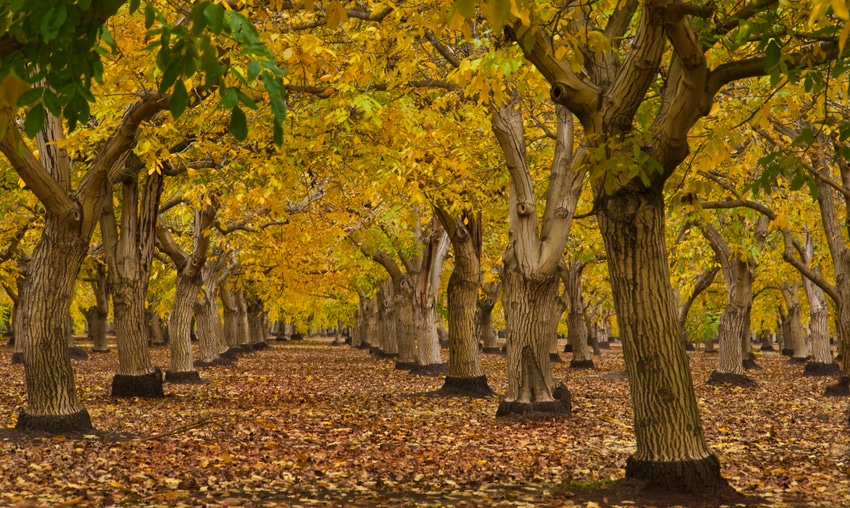
Using a ‘citizen science’ approach, University of California researchers are analyzing sugar and starch levels in wood and bark samples of walnut, almond, and pistachio.
Anna Davidson, manager of the Carbohydrate Observatory at the University of California, Davis, says little is understood about the influence of tree carbohydrate reserves on crop yield, flower set, nut drop, and flower quality.
Even less is known about influence of tree management practices on the carbohydrate status of trees.
The goal of the Carbohydrate Observatory project is to develop a tool that uses starch and sugar levels to predict yield the following year and to better understand crop yield variability.
For a tree to survive into the next season, Davidson says it must prepare for dormancy, a strategy that relies on carbohydrate resources (sugars). The belief is the tree’s carbohydrate status could influence tree performance.
By involving growers in this study, she can see differences between growing areas and learn how levels of tree carbohydrate reserves can influence yield, flower set, nut drop, and flower quality.
Growers who submit tree samples can track the carbohydrate status throughout the year and use the information to make or modify their management, and predict yields.
Since August 2016, tree nut growers in the Central Valley have been asked to submit monthly wood and bark samples to Maciej Zwieniecki’s laboratory at UC Davis. The analysis consists of grinding nut tree samples into powder. A small amount from each sample is then washed in one milliliter of water to dissolve all soluble carbohydrates.
Using a colorimetric method, the concentration of sugars is measured and compared to lab standards. The remaining material is washed several times, centrifuged, and prepared for starch analysis.
It is treated with two enzymes to digest the starch to form the soluble sugars. These are again measured in colorimeter.
Davidson says the soluble sugar and starch process takes three days, and 80 samples can be tested simultaneously. She anticipates about 20,000 samples will be submitted to the lab this year. The lab currently receives samples from about 140 sites throughout the Central Valley.
According to Davidson, the lab needs three, four-inch current year shoots clipped from three random trees. Growers can remove the bark from the shoots, and then place the bark and wood in a self-addressed envelope and send the package to the lab.
Contact Davidson at [email protected] for the mailing address. Growers who participate should send samples every four to six weeks.
Davidson says test results over a year will show carbohydrate levels at dormancy, pollination, bud break, flowering, fruiting, harvest, and leaf drop. Pairing the information with climate and management can provide growers with a better understanding of the role carbohydrates play in production.
Growers can also apply the data findings to trees to help understand environmental stresses, including the impact of low chill hours or drought.
Samples are currently analyzed at no cost to the grower. Analysis results are available through a website.
Pixley area grower Dominic Pitigliano recently sent in samples from his trees. He wants to learn tree energy levels at the onset of the growing season. If the levels are adequate, he could limit fertilizer applications to slow tree growth to save costs.
About the Author(s)
You May Also Like




